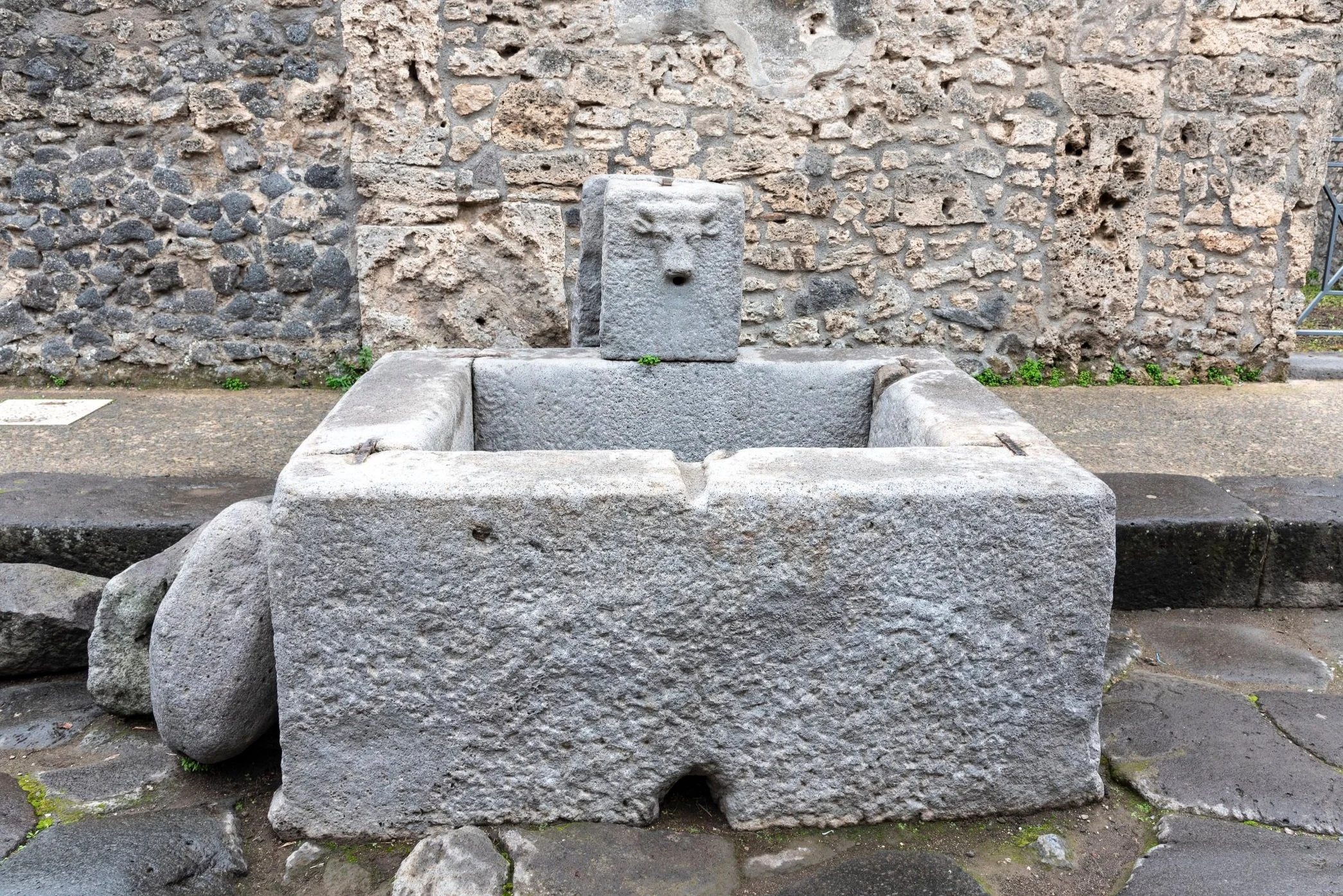Pompeii: A Timeless Tapestry of Human Experience
Stepping into Pompeii is like walking through a portal to the past, where the whispers of ancient life echo through remarkably preserved streets and buildings. My recent trip sparked my imagination as our guide, Barbara, unveiled a glimpse into a sophisticated society tragically frozen in time by Vesuvius' catastrophic eruption.
What struck me most was the remarkable quality of daily life for Pompeii's middle and upper-class residents. Far from the primitive existence one might imagine for life two thousand years ago, this was a city of surprising modernity and convenience. The Romans' extraordinary engineering prowess was evident in their sophisticated infrastructure – lead pipes and hollow terracotta tiles conveyed water throughout the city. Public fountains dotted the streets, ensuring clean water was accessible to all, while those who could afford it enjoyed running water directly in their homes, filling pools, fountains, and even fish tanks.
This wasn't just a technological marvel, but an example of large-scale governmental coordination. A centralized administration enabled the construction of aqueducts and infrastructure that provided essential services across multiple territories – a testament to the Romans' organizational capabilities.
The city's public spaces revealed a highly developed social infrastructure. Thermal baths were more than just places to clean – they were vibrant social hubs where people from various walks of life would gather, exchange news, and maintain their personal hygiene. These spaces played a crucial role in public health, helping to mitigate the spread of diseases that often plagued ancient urban centers.
Culinary and cultural life was equally sophisticated. Bakeries lined the streets, offering fresh bread, while theatrical performances and athletic events provided rich cultural experiences that would feel familiar to modern audiences. The artistic sensibility was breathtaking – mosaics, frescos, and statuary transformed everyday spaces into extraordinary canvases of beauty, with walls alive with intricate designs depicting mythological scenes and portraits of inhabitants.
The city's infrastructure told stories of its own, none more poignant than the deep grooves worn into stone streets by centuries of cart and chariot wheels. These weren't mere tracks, but a tangible record of daily life, commerce, and movement – each groove representing thousands of journeys, quietly inscribing history into the very fabric of the city.
Intriguingly, Pompeii was already in a state of recovery when disaster struck. Recent earthquakes had damaged the city, causing many inhabitants to leave and prompting extensive repairs. Evidence suggests that valuable artworks were being carefully moved to safer locations – a poignant detail that adds complexity to the city's final moments.
One unexpected insight into Roman society emerged through their candid artwork and social spaces depicting human sexuality. The Romans' matter-of-fact approach to human desires was remarkably refreshing – sex was viewed as a natural human need, something to be acknowledged without shame or excessive moralization. This attitude stands in stark contrast to many modern societal hang-ups about physical pleasure.
Reflecting on Pompeii inevitably leads to broader contemplations about human civilization. The Romans had achieved remarkable levels of technological, social, and artistic development – only for much of this knowledge to be lost in the centuries that followed. It's a humbling reminder of how fragile progress can be, and how quickly advanced societies can regress.
Yet those wheel-worn streets whisper another truth: time is not just a force of destruction, but of continuous transformation. Each moment carries within it countless potential paths, each journey leaves its mark, however slight.
As a novelist exploring connections that transcend time and circumstance, my visit to Pompeii felt like walking through a living metaphor for my own work. Just as those stone streets bore witness to countless journeys – each wheel groove a testament to time's patient inscriptions – my Maddie and Nate series seeks to map the subtle, profound ways our choices carve lasting impressions across generations.
The city preserved by Vesuvius offers more than just an archaeological wonder. It provides an intimate glimpse into a way of life – sophisticated, complex, and surprisingly familiar – while simultaneously revealing the profound, almost infinite malleability of human experience. Like the Romans who traversed those paths, my characters navigate complex landscapes where time is not a linear progression, but an intricate weave of interconnected choices.
Pompeii teaches us that what seems fixed can be transformed, that human connection can leave marks as deep and enduring as wheel tracks in stone, echoing across decades and defying the very boundaries of time itself.





